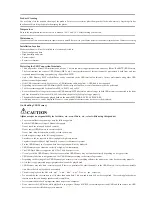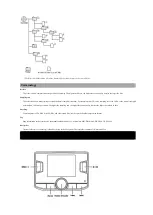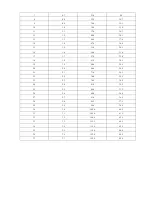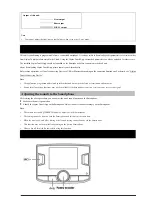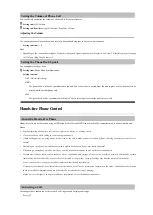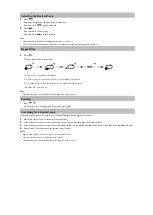
Example 1: Front Left Seat
Adjust the time correction level of the front left speaker to a high value and the rear right to zero or a low value.
The sound is not balanced because the distance between the listening position and the various speakers is different. The difference in distance
between the front left speaker and the rear right speaker is 1.75 m (68-7/8"). Here we calculate the time correction value for the front left
speaker in the above diagram.
Conditions:
Farthest Speaker – listening position: 2.25 m (88-9/16")
Front left speaker – listening position: 0.5 m (19-11/16")
Calculation: L = 2.25 m – 0.5 m = 1.75 m (68-7/8")
Time correction = 1.75 ÷ 343
*
× 1,000 = 5.1 (ms)
* Speed of sound: 343 m/s (765 mph) at 20°C
In other words, giving the front left speaker a time correction value of 5.1 ms makes it seem as if its distance from the listener is the same as
the distance to the farthest speaker. Time correction eliminates the differences in the time required for the sound to reach the listening position.
The time of the front left speaker is corrected by 5.1 ms so that its sound reaches the listening position at the same time as the sound of other
speakers.
Example 2: All Seats
Adjust the time correction level of each speaker to almost the same level.
1
Sit in the listening position (driver’s seat, etc.) and measure the distance (in meters) between your head and the various speakers.
2
Calculate the difference between the distance correction value to the farthest speaker and the other speakers.
L = (distance to farthest speaker) – (distance to other speakers)
These values are the time correction values for the different speakers. Set these values to make each sound reach the listening position at
the same time as the sound of other speakers.
Time Correction Value List
Delay Number
Time Difference (ms)
Distance (cm)
Distance (inch)
0
0.0
0.0
0.0
1
0.1
3.4
1.3
2
0.2
6.8
2.7
3
0.3
10.2
4.0
4
0.4
13.6
5.4
5
0.5
17.0
6.7
6
0.6
20.4
8.0
Содержание UTX-A09
Страница 46: ...Connections ...

